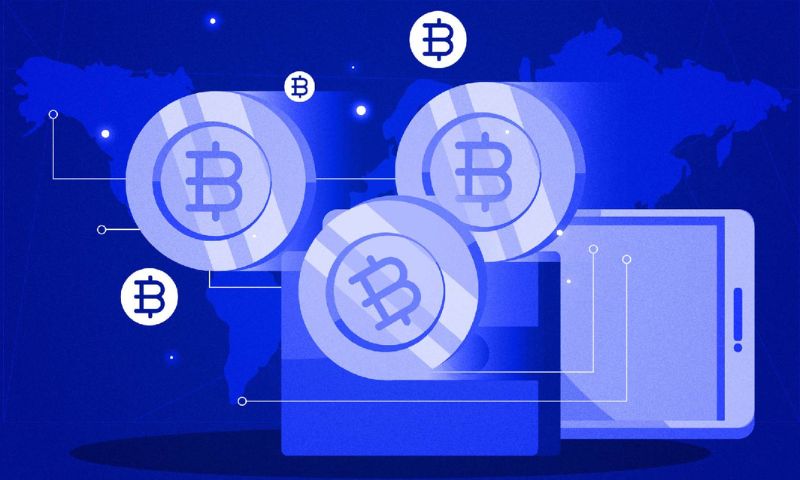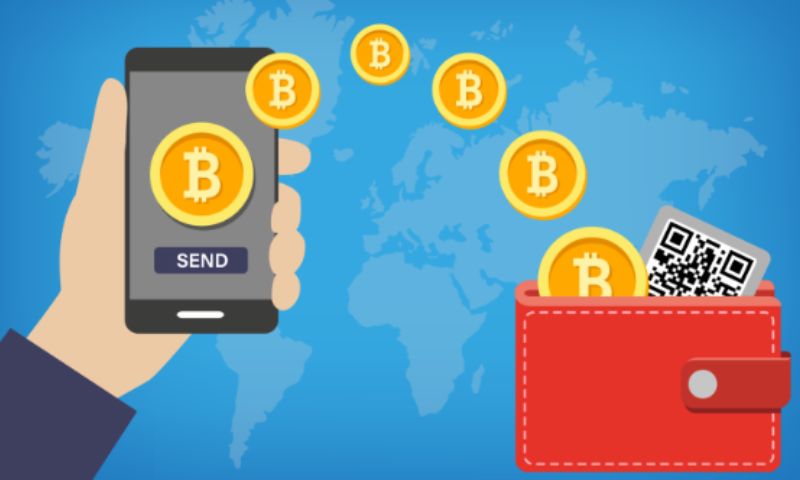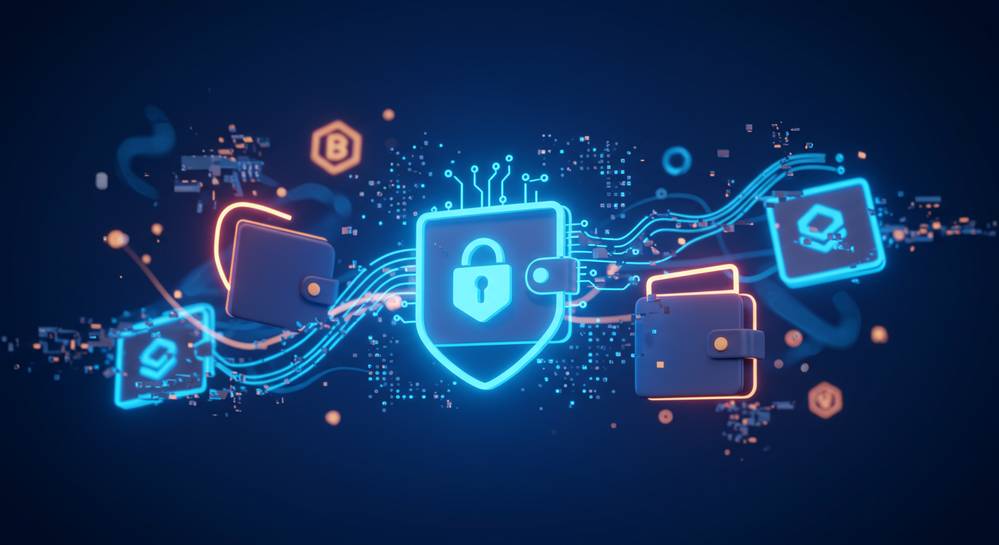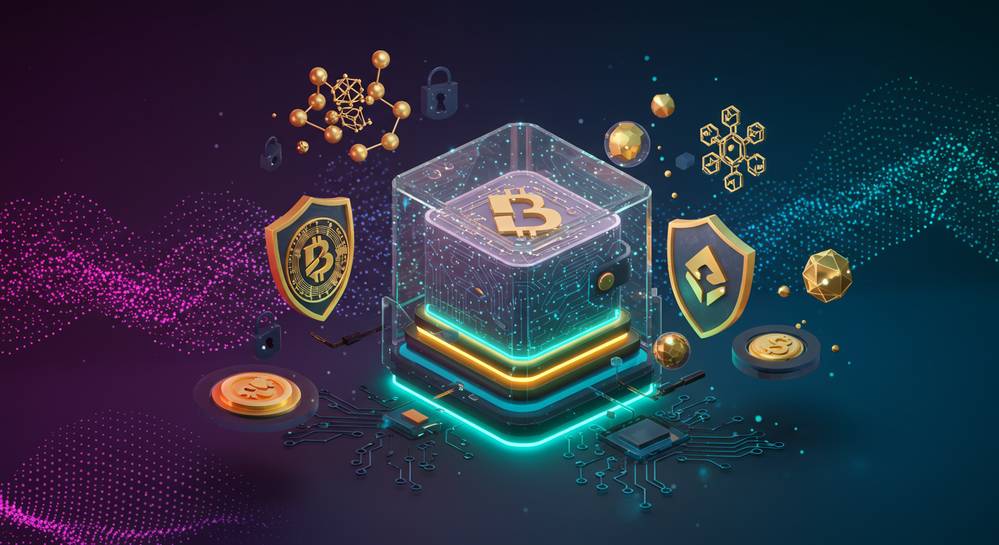How to choose a secure crypto wallet isn’t just about having a place to stash your digital coins; it’s about ensuring your digital wealth stays safe from prying eyes. With cyber threats lurking around every click, settling for just any wallet could mean waving goodbye to your crypto assets forever. That’s why diving deep into the types of wallets, and picking one fortified with iron-clad security features, is a task you can’t afford to take lightly. Ready to wrap your head around hot vs. cold wallets, and the must-have safety nets like multi-signature and two-factor authentication? Stick with me as we cut through the complexity and set you up with a wallet that’s as secure as it is easy to use. Let’s march you through a digital landscape where your crypto stays yours – and yours alone.
Understanding the Different Types of Crypto Wallets
Comparing Hot Wallet vs Cold Wallet
Hot wallets connect to the net and make trading easy. Cold wallets stay offline and keep coins safe. Both have uses but differ in risk levels.
Hot wallets are apps or services that run on internet-connected devices like phones or computers. They’re handy because you can get to your crypto fast. Think of them as your pocket money for everyday use. Like any online tool, though, they face threats from hackers.
Cold wallets, on the other hand, are like your safe at home. They’re offline, which makes them harder to hack. These include USB devices or paper with your coin info on them. They’re great for holding onto your crypto for a long time. But, they’re not as quick to use when you want to make a deal.
Pros and Cons of Hardware Wallet vs Mobile and Desktop Platforms
Hardware wallets are physical devices like USB sticks. They hold your private keys and keep them safe when you’re offline. They protect against online attacks. Plus, they’re easy to carry with you. But, if you lose them, recovering your assets can be tricky.
Mobile and desktop wallets are apps you use on your phone or computer. They’re super convenient. You can manage your coins fast and check your balance anytime. Some risks come with them, though. If your device gets malware or hacked, you could lose your crypto.
Both can be great, but picking the right one depends on how you use your coins. If you trade a lot, mobile or desktop might suit you better. If you want to keep crypto safe for a while, hardware could be your go-to. Always look into the wallet’s security features like encryption, two-factor authentication, and backup options.
In short, remember these points:
Hot wallets are quick for trading but can be less secure.
Cold wallets are safe from hackers but take more time to move your coins.
A hardware wallet stores keys offline, avoiding online threats.
Mobile and desktop wallets offer ease but face more risks from viruses and hacks.
Choose based on your needs: quick access or long-term safety. Checking for good security and backup features is a must. This way, your digital wealth stays under lock and key, ready for whatever your crypto journey throws at you.

Essential Security Features for Safeguarding Your Cryptocurrency
The Role of Multi-Signature and Two-Factor Authentication
Think of your wallet like a vault. You wouldn’t want just one lock on it, right? Multi-signature wallets need a few keys to open, just like a bank vault. They make sure that no one person can run off with your coins. This makes them super safe because it’s like needing several key holders to agree before opening the vault. You can set up your wallet so that it needs, say, three out of five keys. This way, you mix safety with ease of use.
Now let’s talk about two-factor authentication (2FA). We use it often when logging into email or banking apps. For a secure digital wallet, it’s a must. With 2FA, you need two things to get in: something you know, like a password, and something you have, like a text code or an app. It’s like a double check. This way, even if someone gets your password, they can’t get in without that second key.
Encryption Technologies and Private Keys Management
Encryption is a big, fancy word for turning your data into secret code. Your crypto wallet uses encryption to keep your private keys safe. Think of your private keys like the secret code to your wallet’s lock. You need to keep them hidden from others. That’s why your wallet turns this secret code into something only you can understand. If someone else gets hold of your keys without permission, they could steal your crypto.
Managing these keys means you’re the only one with access to them. It’s important not to lose them or forget them. Secure wallet backup is a safety net. If you lose your keys, this backup can help get your crypto back. It’s like having a spare key to your house just in case you lose the original one.
And don’t forget about public and private keys. Your public key is like your home address. You can share it with anyone to receive crypto. Your private key is like the key to your home’s front door. You must never share it, or others could take your digital cash.
In conclusion, having a strong password is just the start. Use multi-signature wallets and two-factor authentication to add layers of safety. Encrypt your wallet and manage your private keys like they’re the only set you’ll ever have. By doing these things, you can make sure your crypto stays just where it should be – with you.
Best Practices for Backup and Recovery of Digital Assets
Creating a Secure Wallet Backup Strategy
Your crypto is as safe as your backup plan. A solid backup keeps your coins safe if things go wrong—like if you lose your device. Here’s how to backup your wallet right:
- Use different places to keep backups. Think of fireproof safes, safety deposit boxes, and with trusted family.
- Write down your seed phrase. A seed phrase is a list of words that can restore your wallet. Keep this paper safe and away from prying eyes.
- For extra safety, split your seed phrase. Store it in pieces in various spots.
- Look into cold storage. Cold storage means keeping your wallet offline. It’s safer from hackers.
- Think about USB hardware wallets or paper wallets. They’re physical, so they can’t be hacked online.
- Always encrypt your digital backups. Use strong passwords that you won’t forget.
- Trust no one with your backup details. Scammers are out for your crypto.
When you backup, you’re making sure you can get to your coins, even if your computer dies or your phone takes a swim. Take your time to set it up right. A good backup could mean the difference between a slight setback and a total loss.
Navigating the Wallet Recovery Process
If you need to get your wallet back, the process should be clear:
- First, get your wallet app or device ready.
- Then, enter your seed phrase. This is the key to all your crypto.
- If you’ve split up your seed phrase, gather all parts.
- Follow the steps given by the wallet provider. They know their stuff.
- Use a secure and private connection. Avoid public Wi-Fi when you restore your wallet.
- Update everything after you’re back in. Update the app, your passwords, and security settings.
- If you hit snags, reach out to customer service. Use official channels only.
Losing access can be scary, but with a good backup strategy, recovery should be smooth. Always handle your assets with care. After all, in the world of crypto, a little bit of precaution can save you a lot of heartache down the road. Remember, staying vigilant and informed is a must. Keep your assets secure, and you’ll enjoy the crypto ride with peace of mind.

Advanced Security Measures for Crypto Wallets
Exploring Biometric and Air-Gapped Wallet Solutions
When it comes to a secure digital wallet, think beyond passwords. Biometric security uses your unique traits, like fingerprints or face ID, to guard your crypto. This means only you can access your funds. No two people have the same fingerprint, so this adds a strong layer to your wallet’s safety.
Air-gapped wallets are not linked to the internet. This puts a giant wall between hackers and your crypto. Think of it as a safe that’s not connected to any network. To hack this, someone needs physical access, which is tough to get. These wallets might be a bit harder to use day-to-day but offer top-notch security from online threats.
Biometrics are now built into many phones and laptops and are straightforward to use. Meanwhile, getting an air-gapped wallet might involve a special USB hardware wallet or even a paper wallet. While USB wallets plug into your device when you want to trade, paper wallets hold your crypto info in print and stay safe as long as you keep the paper secure.
With both methods, your private keys never touch the internet. Your key is like the secret code to your crypto safe. Keeping it offline in a secure digital wallet stops hackers who rely on internet access to steal.
The Importance of Regular Wallet Security Audits and Updates
Do you want to keep hackers away? Then check your wallet like you check your home’s locks. Wallet security audits are like a pro looking over your wallet to find weak spots. This could mean anything from checking for software bugs to making sure your wallet encryption is tough as nails.
In a hardware wallet, this might be looking to make sure it’s not physically damaged. For software wallets, it’s watching for updates from your trusted wallet providers. These updates are like new shields against the latest threats. Skipping them is like inviting trouble.
Having the latest security features can make or break your crypto safety. Wallet providers often add new tools like multi-signature wallets – think of a bike lock that needs two keys to open. This requires more than one person to approve transactions. It’s a team effort to keep your crypto safe.
Most people know to look for two-factor authentication (2FA) too. This means you need two proofs – like a password and a code sent to your phone – to get into your wallet. It’s a simple way to add an extra step for anyone trying to sneak in.
And when new threats appear, the best crypto wallets update to keep you safe. These updates might include better ways to hide your public and private keys from prying eyes. Without updates, you’re using old tricks to fight new enemies, and that’s a losing game.
Keeping your crypto secure takes work, but it’s worth it. Thinking smart, like using air-gapped or biometric wallets, and staying on top of security audits and updates will help you keep your digital wealth safe. Remember, it’s not just about being safe; it’s about staying safe.
We’ve covered a lot of ground in this post. We looked at different crypto wallets, like hot and cold ones, and weighed up their good and bad sides. We saw how hardware choices stack up against mobile ones. We dove into key security steps, such as using multi-sign and two-factor stuff. Also, we can’t forget about tough encryption to keep private keys safe.
Then, we talked about saving and getting back our digital riches if things go south. Making a solid backup plan matters a lot here. If you need to get your wallet back, knowing the steps helps a ton.
Lastly, we checked out high-level safety tricks, like using your fingerprint or keeping the wallet offline. And never skip on checking your wallet’s safety setup or updating it.
So keep these tips in mind. They could be the shield that guards your valuable crypto from the many dangers out there. Stay safe, stay smart, and keep your digital treasure locked up tight!
Q&A :
What factors should I consider when selecting a secure crypto wallet?
When choosing a secure crypto wallet, it’s important to consider factors such as the type of wallet (hardware, software, or paper), the security features offered (such as two-factor authentication and multi-signature capabilities), the reputation of the wallet provider, ease of use, backup and restoration features, compatibility with different cryptocurrencies, and customer support availability.
Is it safer to use a hardware wallet for cryptocurrency?
Generally, hardware wallets are considered safer than software wallets because they store your private keys offline on a physical device, making them less susceptible to online hacking attacks. However, it’s important to purchase hardware wallets from reputable manufacturers and to follow security practices like keeping the recovery phrase in a safe place.
Can a mobile crypto wallet be secure enough for my needs?
Mobile crypto wallets can be secure if they have robust security features like strong password protection, biometric authentication, and the ability to create and store a backup of your wallet’s private keys. Always ensure you’re downloading a legitimate app from a reliable source and keep your mobile device’s operating system updated to protect against vulnerabilities.
How do I know if a crypto wallet provider is reputable?
To determine if a crypto wallet provider is reputable, research the company’s history, read user reviews, check for endorsements from known figures in the crypto community, and look for news about past security breaches or successful audits. It’s also advisable to select providers that have been operating in the market for several years with a track record of security and reliability.
What encryption standards should a secure crypto wallet have?
A secure crypto wallet should utilize industry-standard encryption protocols such as AES-256 encryption for the wallet data. Additionally, the wallet should offer secure private key management, such as BIP 32 or BIP 44, to ensure that your funds are protected even if the device is compromised. Look for wallets that regularly update their software to address new security threats.




